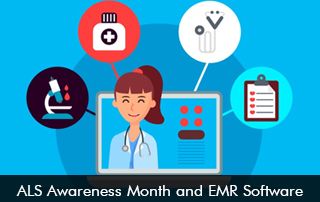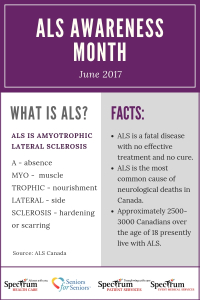May marks ALS Awareness Month, a time dedicated to raising awareness and understanding about Amyotrophic Lateral Sclerosis (ALS), also known as Lou Gehrig’s disease. ALS is a progressive neurodegenerative disease that affects nerve cells in the brain and spinal cord, ultimately leading to muscle weakness, paralysis, and respiratory failure. Despite its debilitating nature, there is currently no cure for ALS, making early diagnosis and comprehensive patient care crucial.
In recent years, Electronic Medical Record (EMR) software has emerged as a powerful tool in the healthcare industry, revolutionizing the way medical professionals diagnose, treat, and manage various diseases. When it comes to ALS, EMR software plays a pivotal role in streamlining the diagnostic process, facilitating effective communication among healthcare providers, and improving patient outcomes. This ALS Awareness Month, let’s delve deeper into how EMR software contributes to spreading awareness and enhancing the quality of care for ALS patients.
Streamlining ALS Awareness and Diagnostic Processes
One of the biggest challenges in managing ALS is its complex diagnostic process. ALS symptoms can mimic those of other neurological conditions, making it difficult to diagnose accurately, especially in the early stages. EMR software simplifies this process by providing healthcare practitioners with comprehensive patient records, including medical history, symptom progression, and diagnostic test results.
With EMR systems, physicians can easily access a patient’s complete medical history with just a few clicks, allowing for a more holistic evaluation of symptoms and facilitating early detection of ALS. Additionally, EMR software often includes built-in decision support tools and diagnostic aids, such as clinical guidelines and algorithms, which can assist healthcare providers in making accurate and timely diagnoses.
Facilitating Interdisciplinary Collaboration
ALS management typically requires a multidisciplinary approach involving neurologists, pulmonologists, physical therapists, speech therapists, and other healthcare professionals. EMR software serves as a centralized platform for collaboration, enabling seamless communication and information sharing among members of the healthcare team.
Through EMR systems, healthcare providers can easily share patient records, treatment plans, and progress notes in real time, ensuring that all team members are on the same page regarding the patient’s care. This interdisciplinary collaboration not only enhances the efficiency of care delivery but also promotes a more holistic and coordinated approach to managing ALS symptoms and complications.
Improving Patient Engagement and ALS Awareness Education
Another key aspect of ALS Awareness Month is educating patients and their families about the disease, its symptoms, and available treatment options. EMR software can play a significant role in patient education by providing access to personalized educational resources, treatment guidelines, and support services directly within the electronic medical record system.
Healthcare providers can use EMR software to send educational materials and resources to patients electronically, empowering them to take an active role in managing their condition. Additionally, EMR systems can facilitate secure messaging and telehealth consultations, allowing patients to communicate with their healthcare team conveniently and access timely support and guidance.
Enhancing ALS Awareness, Research, and Data Analysis
EMR software also contributes to advancing ALS research and improving our understanding of the disease through data collection and analysis. By capturing comprehensive patient data, including demographic information, clinical characteristics, and treatment outcomes, EMR systems provide valuable insights into disease trends, prognostic factors, and treatment efficacy.
Researchers and healthcare organizations can leverage EMR data to conduct population-based studies, clinical trials, and quality improvement initiatives aimed at enhancing ALS diagnosis, treatment, and care delivery. Furthermore, EMR software enables healthcare providers to participate in disease registries and collaborative research networks, facilitating data sharing and collaboration across institutions and specialties.
Ensuring Compliance and Documentation
Finally, EMR software plays a crucial role in ensuring compliance with regulatory requirements and documenting the care provided to ALS patients. By capturing detailed clinical documentation, including assessments, treatment plans, and progress notes, EMR systems help healthcare organizations demonstrate adherence to best practices and quality standards.
Moreover, EMR software streamlines administrative tasks, such as billing and coding, reducing the administrative burden on healthcare providers and enabling them to focus more time and attention on patient care. Additionally, EMR systems often include built-in safeguards and alerts to help prevent medication errors, adverse events, and other potential safety issues.









